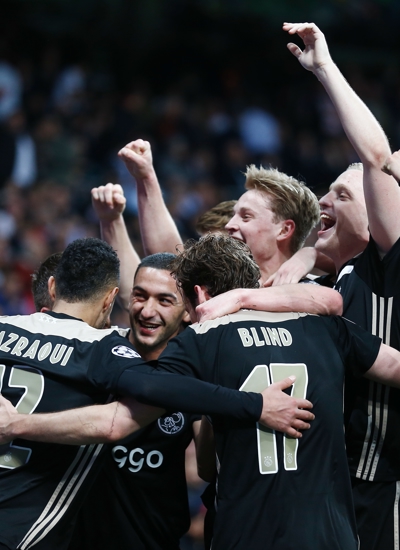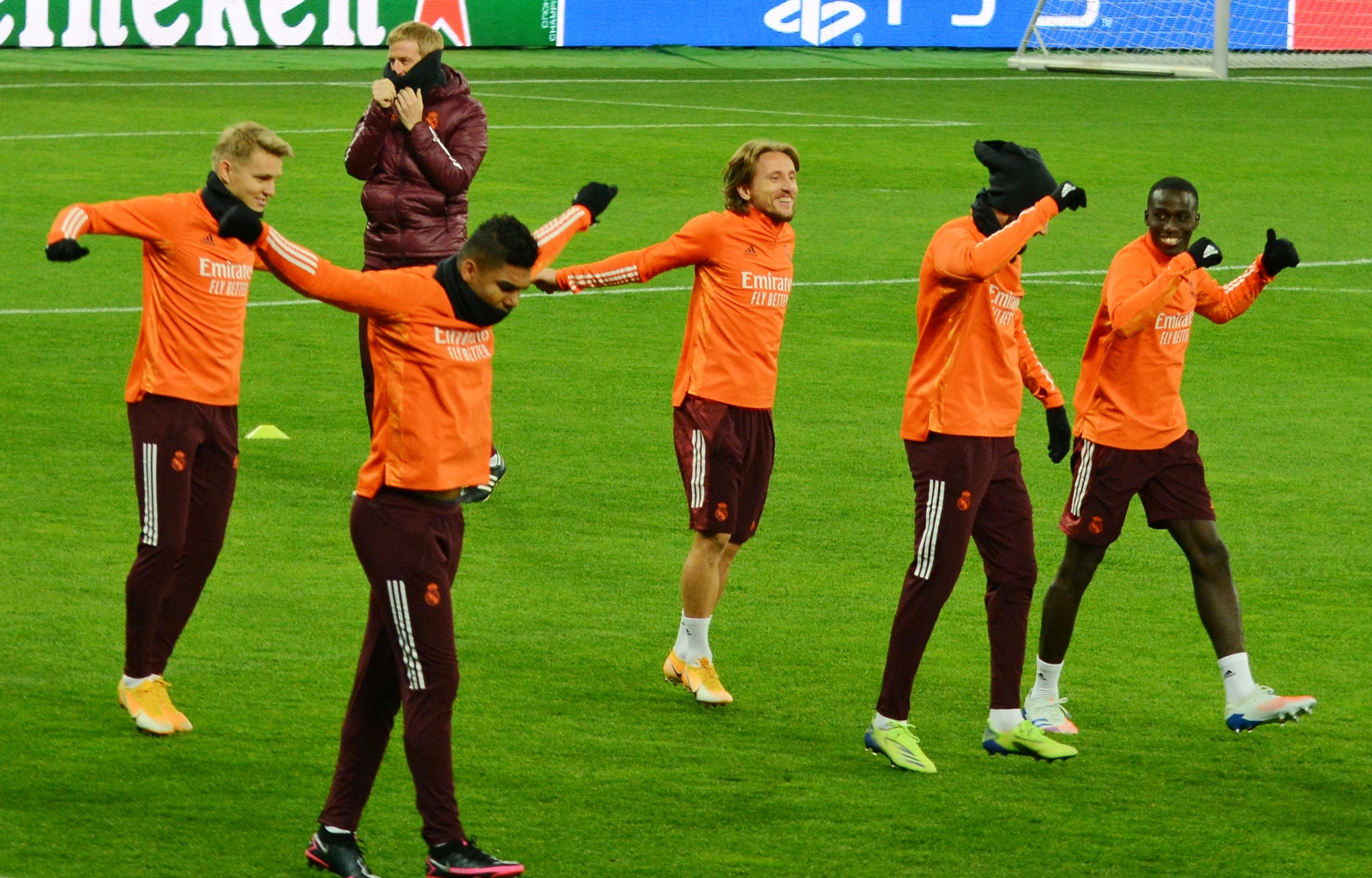
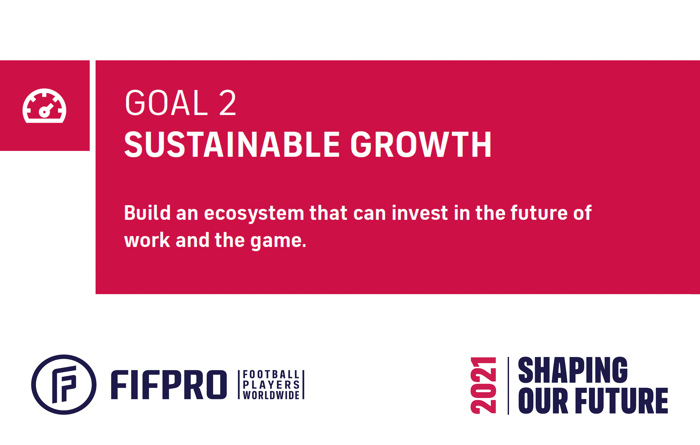
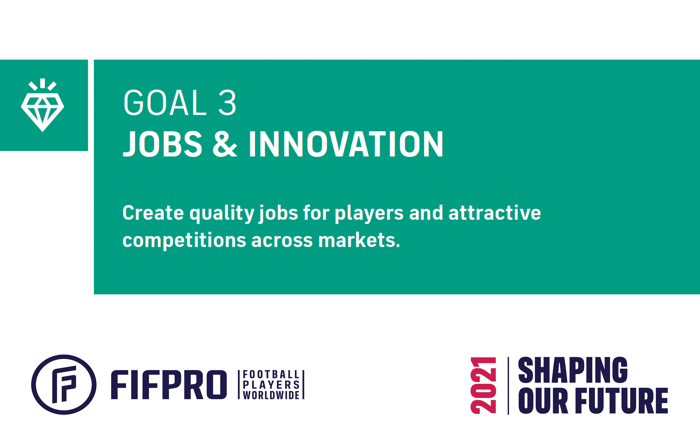
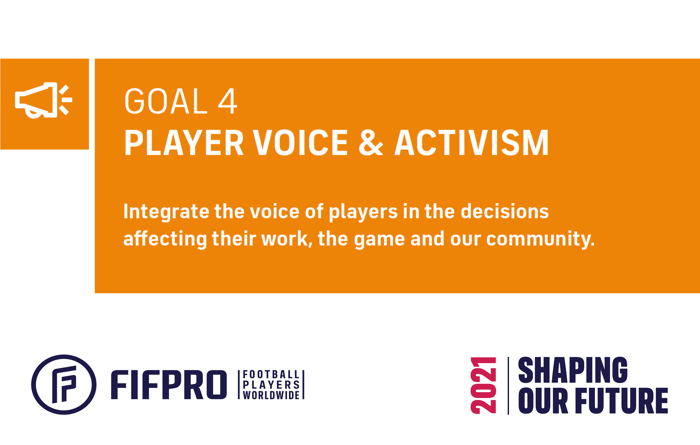
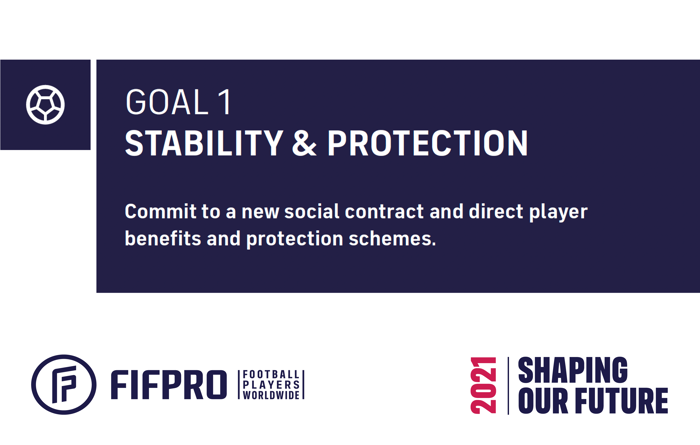
Also find: goal 1 – industry stability.
Based on an analysis of industry data over the last decade, the Shaping our Future report’s second objective highlights that it’s often the footballers themselves who are driving performance and entertainment, connecting people and building communities. However, a more sustainable ecosystem is vital for them to succeed.
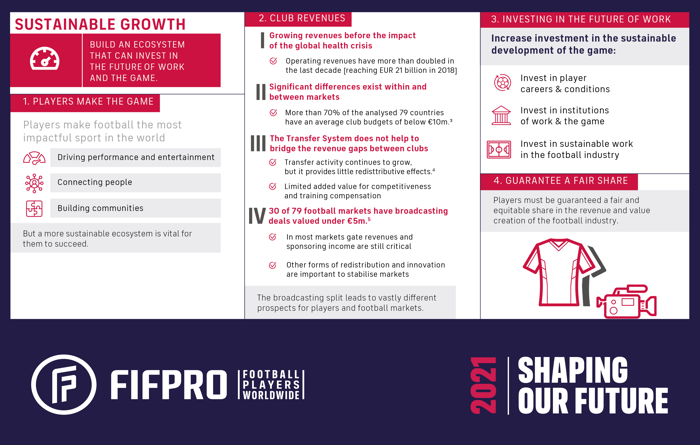
1. Players make the game
The players make the game. Without their passion, skill and desire, football would not exist in its current form as the most popular and impactful team sport in the world. Professional football is an industry which, unlike many other sectors, relies on the absolute peak performance of its workers. As players constitute the main resource for the sporting success of a football club, it is not surprising that the central spending is therefore focused on the player to fulfil the main purpose of the club – sporting excellence. However, the single biggest obstacle for the sustainable development of the global game is the football industry’s ability to transform job opportunities outside of the leading markets and top-tier competitions into stable and decent jobs for players in the entire professional football pyramid.
2. Club revenues
The global football labour market and its domestic markets generate a select few revenue sources including Match-day income, commercial and sponsorship revenue, and broadcasting profits. Each football market and every club will have a relative dependence on one or more of these revenue streams. In addition, clubs rely on an often complex macroeconomic system to redistribute revenue, and benefit from various revenue-sharing models as well as dedicated solidarity and redistribution mechanisms.
“EVEN IN ESTABLISHED MARKETS, PLAYERS ARE EXPERIENCING SYSTEMATIC ABUSE AND VIOLATIONS OF THEIR RIGHTS”
Even the economic revenues of some of the more established markets provide concern, as players are still experiencing systematic abuse and violations of their rights, including their contractually agreed employment conditions. High-profile markets which tolerate bad practices in their ecosystem fuel legitimate concerns regarding the game’s sustainability, as well as the implementation of sound business practices in the professional football sector.
While club revenue is not the only factor when it comes to employment conditions, the two have a very strong direct connection. The fact that 30 different football markets out of 79 markets in this sample could not generate more than €5m in broadcasting deals shows how precarious many markets operate and how important it is to strengthen macroeconomic stabilisation policy schemes.
“ALMOST 40% OF MARKETS HAVE BROADCASTING DEALS VALUED UNDER €5M”
3. Investing in the future of work
This requires a player-centred agenda for the future of work that strengthens the social contract as mentioned in the first goal [LINK], and which places players and their work at the centre of economic and social policy within the football industry. This agenda consists of three pillars of action, which in combination will drive growth, equity and sustainability:
- Increase investment in player careers and conditions,
- increase investment in the institutions of work and the game, and
- increase investment in decent and sustainable work in the football industry.
4. Guarantee a fair share
In this context, FIFPRO defends the rights of its members and their collective efforts to provide better employment conditions to players in domestic football markets and to collectively negotiate a fair and equitable remuneration and protection for their work that furthers the stability of the overall football industry.
Next up: Goal 3 - Jobs & Innovation
Click on the image below to learn more about goal 3: jobs & innovation


